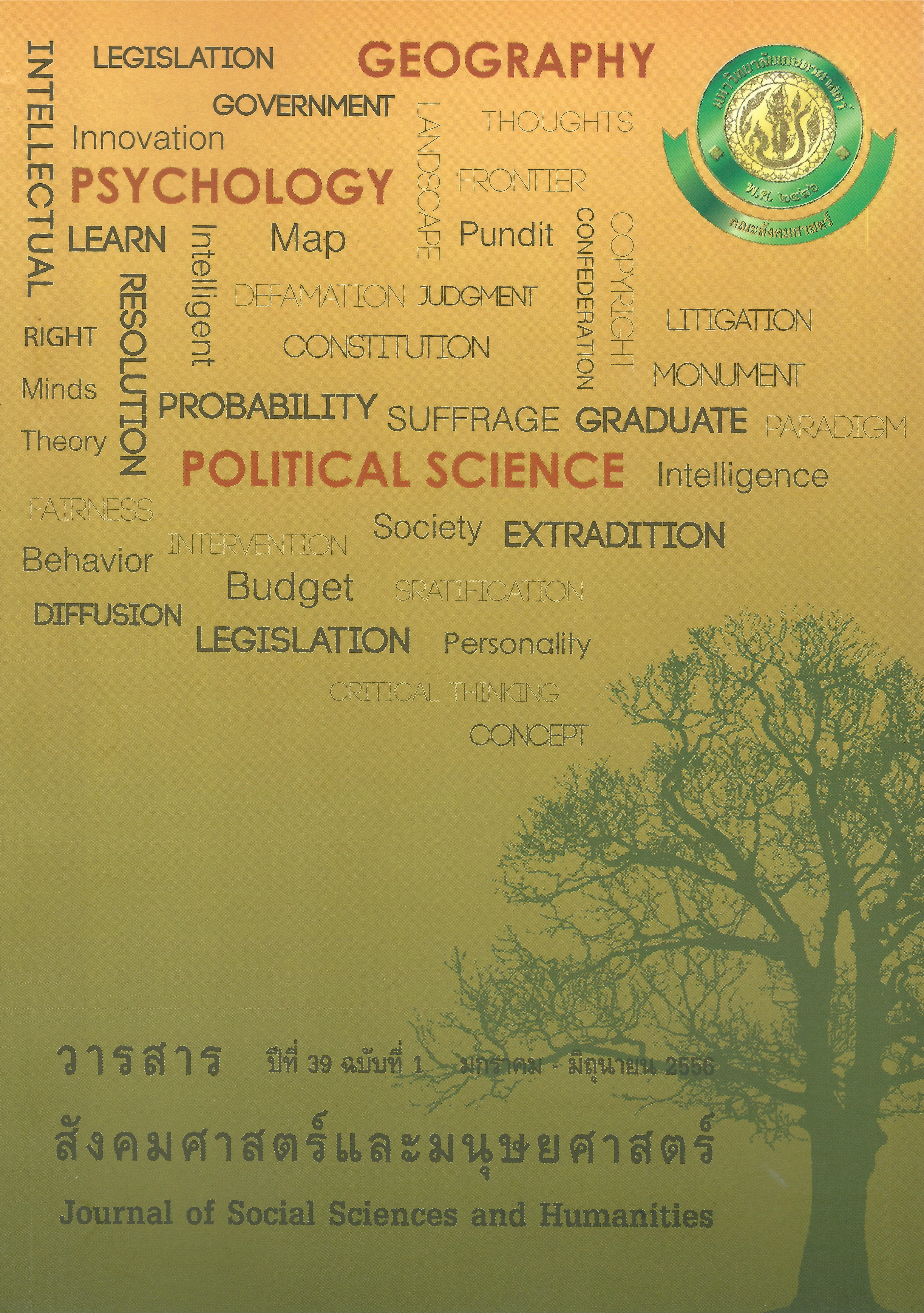ดัชนีชี้วัดความสุขมวลรวมชุมชนตามหลักปรัชญาเศรษฐกิจพอเพียง
Main Article Content
บทคัดย่อ
การวิจัยนี้มีวัตถุประสงค์เพื่อพัฒนาดัชนีชี้วัดความสุขมวลรวมชุมชนตามหลักปรัชญาเศรษฐกิจพอเพียง ผู้วิจัยใช้การวิจัยแบบผสมผสานระหว่างการวิจัยเชิงคุณภาพและการวิจัยเชิงปริมาณเครื่องมือที่ใช้ในการวิจัย ได้แก่ เทคนิคการประชุมผู้ทรงคุณวุฒิ เทคนิคเดลฟาย การวิเคราะห์ปัจจัย และแบบสอบถาม สถิติที่ใช้ได้แก่ มัธยฐาน ฐานนิยม ค่าพิสัยระหว่างควอไทล์ ค่าความร่วมกันค่าสัมประสิทธิสหสัมพันธ์ระหว่างตัวประกอบ ค่าไคเซอร์-ไมเยอร์-โอลคิน การทดสอบบาร์ทเลทท์ และค่าสหสัมพันธ์อย่างง่าย กลุ่มเป้าหมายได้แก่ ผู้ทรงคุณวุฒิ 40 คน ผู้เชี่ยวชาญ 17 คน แกนนำหมู่บ้าน 350 คนและครัวเรือนอีก 724 ครัวเรือน
ผลการวิจัยพบว่า 1) องค์ประกอบและตัวชี้วัดความสุขมวลรวมชุมชนตามหลักปรัชญาเศรษฐกิจพอเพียง มีทั้งหมด 7 องค์ประกอบ 51 ตัวชี้วัด 2) เกณฑ์การประเมินความสุขมวลรวมชุมชนตามหลักปรัชญาเศรษฐกิจพอเพียงใช้มาตราส่วนประมาณค่า 5 ระดับและค่าร้อยละ 3) เกณฑ์การประเมินมีประสิทธิภาพสอดคล้องตามหลักวิชาการและผลการวิเคราะห์ข้อมูลทุกประการ
Gross Community Happiness Index Following The Philosophy of Sufficiency Economy
The purpose of the research was to develop the gross community happiness index following the philosophy of sufficiency economy. The researcher used mixed research method of qualitative and quantitative researches. The research tool was developed by the expert group meeting technique, the Delphi technique, factor analysis and the questionnaires. The statistics used in data analysis were the median, the mode, the quartile and element analysis, communality, correlation coefficient value between the elements, the Kaiser-Meyer-Olkin, the Bartlett test, the product moment correlation. The target groups consisted of seventeen Delphi technique experts, forty experts’s group meeting, 350 village mainstays, and 724 households. The results of the research are as follows. Firstly, the elements and the gross community happiness indicators following the philosophy of sufficiency economy provided seven elements and fifty-one indicators. Secondly, the gross community happiness evaluation criteria following the philosophy of sufficiency economy used a five-level rating scale test and the percentages. Thirdly, the evaluation criterion was efficient according to academic principle and the results of data analysis.


